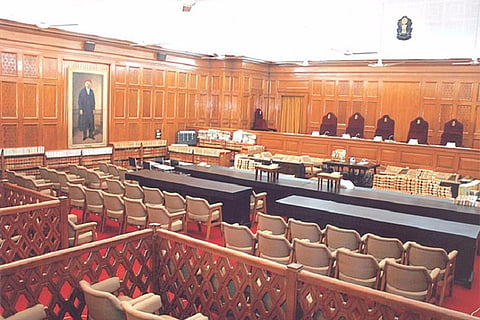

By Prashant Reddy
Retired Justice Markandey Katju is back in the news, this time for his scathing comments against the Chief Justice of India T. S. Thakur for his orders in a PIL against BCCI. Attacking Chief Justice Thakur for his judgments constituting the Lodha Committee to review and reform the functioning of the BCCI, Justice Katju (who has been professionally engaged by BCCI) explained on his blog that the CJI had little respect for the doctrine of precedents, which makes the judgment of a larger bench binding on smaller benches.
He comments "the Chief Justice of India is bound by it, and he too must decide cases in accordance with law. But evidently Justice Thakur believes that since he is the CJI he is above the law, and need not follow it, being the monarch of all he surveys".
He goes on to attack the CJI accusing him of “gross judicial misconduct" and "utter lack of judicial discipline and the self-restraint expected of a judge of a superior court".
While it is rare for a sitting CJI to be subject to such scathing criticism, such scrutiny is certainly most welcome. The present CJI’s track record on Public Interest Litigation (PIL) is a bit strange since he’s admitted some patently absurd PILs while refusing to admit more serious ones.
To begin with, there is the infamous PIL filed by a lawyer seeking a ban on "Sardar jokes" on the grounds that it hurts the sentiments of the Sikh community. This was prima facie a ridiculous PIL– it did not involve any issue of public interest and there is no legal basis to seek a ban on any such jokes unless and until they cross the red-lines already existing in laws such as the Indian Penal Code.
Even if such red lines are crossed, the law prescribes a course of action. There are many such ridiculous PILs that are filed before the Supreme Court and in most cases the court nips them in the bud by refusing to admit such petitions. Not in this case, though.
A bench headed by Chief Justice T. S. Thakur admitted the PIL, issued notice, allowed more parties such as the SGPC to the join the litigation and after several hearings is seriously debating the ways and means to implement such a ban.
The second PIL that was indulged by the CJI was the one to bring back the Kohinoor diamond- seized by the British during colonial rule and is currently a part of the crown jewels of the British monarchy.
The issue of restitution of the Kohinoor is raised ever so often. While India has a political claim to the diamond, there is absolutely no legal basis in national or international law to claim restitution of the diamond. In other words, since there was no question of law. This was a perfect case for rejecting the PIL but the CJI once again issued notice to the government and the case is pending before the SC.
There are other strange cases, where the CJI has passed orders, directing the Additional Solicitor General to inspect condom packaging and report whether these contravened laws on obscenity, and another one banning diesel cars of a certain engine power and size– with little scientific evidence and absolutely no legal basis to back the ban.
In contrast to the above cases is the PIL filed by Dinesh Thakur– the whistle-blower who exposed how Ranbaxy was manipulating safety data and compromising the health of patients consuming its drugs. Ranbaxy pled guilty to the US government and was fined $500 million dollars.
In March this year, Dinesh Thakur filed two PILs before the SC seeking sweeping reforms to the manner in which the pharmaceutical industry is regulated in India and directed towards improving the quality of drugs (Full Disclosure: I was one of the lawyers advising him in this case).
The PILs sought very specific remedies– in particular, it sought directions to the government to carry out several investigations that it had promised in writing to the Parliamentary Standing Committee on Health after its scathing 59th Report. The Standing Committee had discovered to its shock that drugs banned in other countries were still being sold in India.
The PIL also sought directions to the Government to reveal the results of the investigation ordered by the Government of India into the affairs at Ranbaxy after it pled guilty to charges of fabricating safety data and agreed to pay $500 million in fines to the USFDA.
Apart from these investigations, the PIL sought the enforcement of several safety norms which the government had already agreed to in principle but had failed to enforce. For each instance, the PIL listed a RTI response from the government confirming or denying the allegation. On admission day, the Chief Justice expressed his intention to dismiss the PIL in less than ten minutes on the grounds that it raised only "academic issues". The PILs were then withdrawn.
Less than a month later, Advocate M.L. Sharma filed a PIL seeking a similar investigation into Ranbaxy and a different bench of the SC was concerned enough to issue notice seeking the government’s response to the PIL– clearly not all judges think that drug quality is an "academic issue".
The present state of PIL jurisprudence before the SC is alarming. There is little coherence, predictability or consistency in how different benches of the same court admit or respond to PIL. Too much is left to the personal prejudices and temperament of two judges on admission day– a fact which makes it all the more important to put in place a credible system of judicial appointments along with an equally robust system to ensure judicial accountability.
The writer is currently a Research Associate in a South East Asian University. Views expressed in this piece are the author's own.